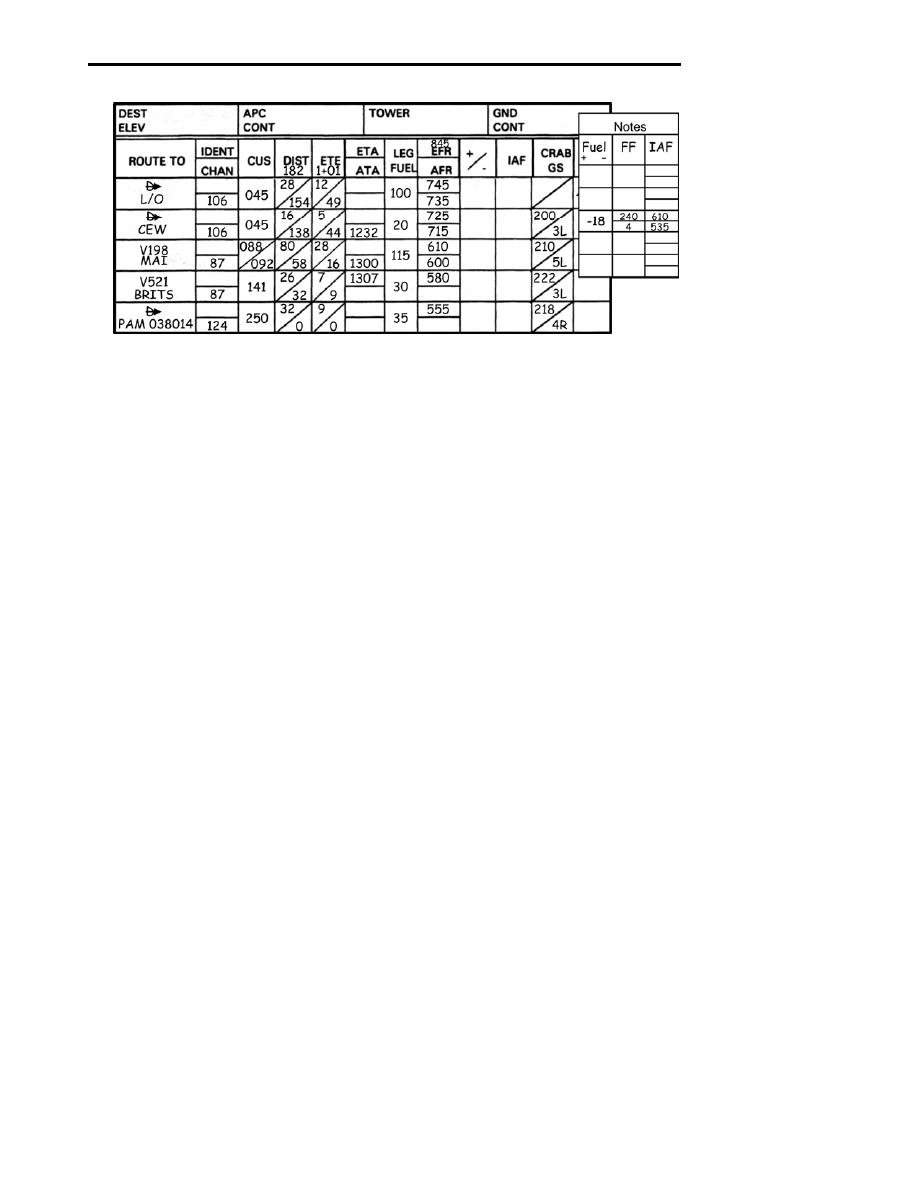 |
|||
|
|
|||
|
|
|||
| ||||||||||
|
|  INSTRUMENTS FLIGHT PLANNING
CHAPTER FOUR
Figure 4-3 Fuel Analysis
To estimate fuel to the IAF, read across the MAI line and find the time remaining to the IAF.
Sixteen minutes at a fuel flow of 240 PPH = 64 lbs. We can estimate that our fuel at the IAF is
600 minus 65 lbs (64 lbs rounded up to the nearest 5 lbs) or 535 lbs.
NOTE
This method is preferred when TAS remains constant and your
route includes major course changes that normally invalidate GSs
computed in flight. Here are two cases when you should not use
this method:
a.
When TAS has changed; or
b.
When the calculated GS remains constant for subsequent legs
of the flight (e.g., cross county flights).
In both cases, new ETEs are calculated based on distance divided by GS. Use these ETEs for
fuel and time estimates.
Your jet log is segmented into columns, which may aid you in your calls. This is merely a
suggested system. It may be easier for you to tabulate the numbers on another sheet of paper. In
any case, the one presented in Figure 4-3 has space for fuel (+ or preflight), fuel flow estimates
to the IAF, and a MISC column which you can use for any notes.
The three separate calls are summarized below:
TWO-MINUTE PRIOR Call
Outbound heading for course
ETA to next checkpoint
TWO-MINUTE PRIOR, MARK-ON-TOP AND WINGS LEVEL CALLS
4-7
|
|
Privacy Statement - Press Release - Copyright Information. - Contact Us |